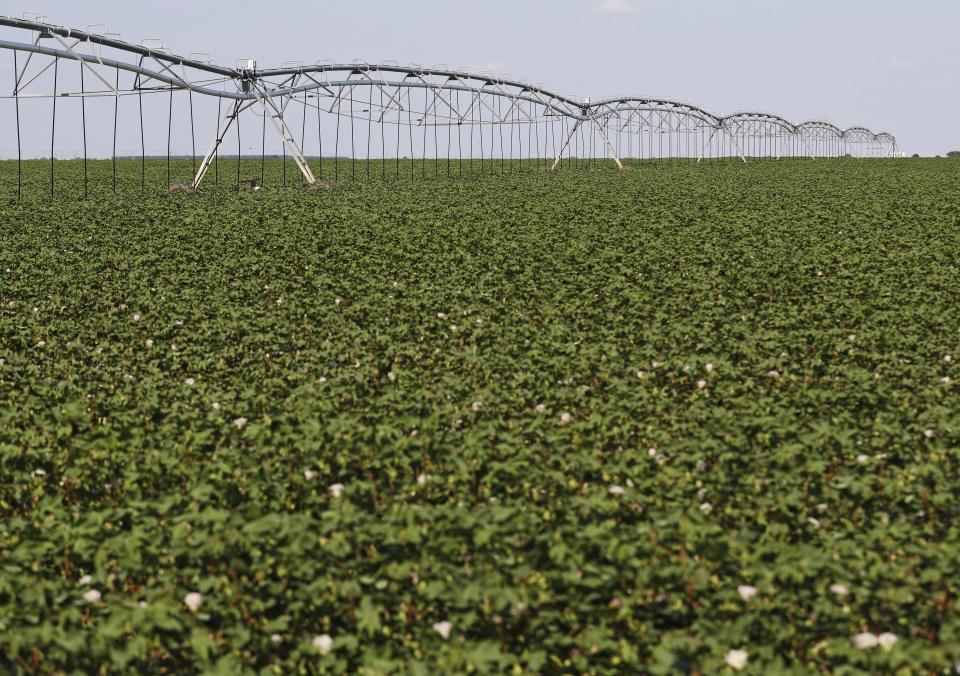After a rough year for cotton, Texas farmers approach the new season with caution

Remnants of extreme weather events that riddled our nation last year will continue to cripple U.S. agriculture for several years coming, experts say.
As mega-droughts scorched fields of crops in the Southwest last summer, Hurricane Ian raced coastal state farmers to harvest in early fall, and wildfires set farms ablaze in California from spring to winter.
Now, Texas cotton farmers will approach the upcoming planting season with trepidation — just a year after the state headed into the growing season with its highest planted area since 1954 — with intentions to plant less this spring as La Niña makes her much-awaited departure.
"History has shown that U.S. farmers respond to relative prices when making planting decisions," Jody Campiche, the National Cotton Council's vice president of economics and policy analysis, said in a news release.
Right now, the commodity's value sits significantly lower from where it was this time last year — with average futures prices decreasing from $1.22 per pound to 84.9 cents per pound, year over year — while inflation continues to impact input prices with high fuel and fertilizer costs, though they have fallen slightly since last year.
Growing forward
Trailing one of the hottest summers on record, many Texas cotton farmers have decided this year's harvest is just not worth wagering as they face higher-than-usual input prices, low commodity values and the risk of another drought-stricken crop.
In December, the National Cotton Council mailed a survey asking producers for the number of acres they planned for cotton this coming season. Based on the responses, Texas' planted acreage is forecast to decline by more than 21 percent, one of the largest decreases expected among the 17 cotton-producing states.
As the nation's leading producer of cotton, the difference — from 7.85 million planted acres in 2022 to approximately 6.2 million this year — is greater than the total acreage planted of any other state. In fact, the acreage shortage is more than the acreage intended for Alabama, Arizona, California, Florida, Kansas, Louisiana, New Mexico, North Carolina, South Carolina and Virginia combined.
Growers in the Southwest — which includes Kansas, Oklahoma and Texas — say they will shift their focus onto corn, sorghum and wheat (all of which are likely to bring a greater return value than cotton this year).
Floydada farmer Mike Lass is one of them.
Lass planted about 500 acres of dryland cotton last year but could only harvest a small fraction of it — about 50 acres — after the year-long drought seared his fields. While he remained optimistic for quite some time, he said he had realized by early July that it was no longer worth salvaging.
As the Ogallala Aquifer, which serves as the main water source for the High Plains, continues to dwindle and the climate crisis brings more frequent and extreme weather events — likely significant droughts of record for our region — Lass expects this will become the norm.
"You know, we're just dying out here," Lass previously told the Lubbock Avalanche-Journal. "And as water continues to dwindle, I'm afraid that's going to be our theme."
While no state produced an abundant cotton crop last year, Texas was especially spread thin as extreme drought condition and record abandonment levels yielded the lowest-ever cotton harvest the state has seen.
In total, the state produced just over 2 million acres, aligning with the national trend in which the total cotton supply quickly spiraled from 10.27 million acres in 2021 to 7.9 million acres last year.
Global production, however, is expected remain steady as Brazil, China and India bring more to the table.
More:West Texas saw record-low cotton harvest this year, but global production prevailed
This article originally appeared on Amarillo Globe-News: After rough cotton year, Texas farmers approach new season with caution
